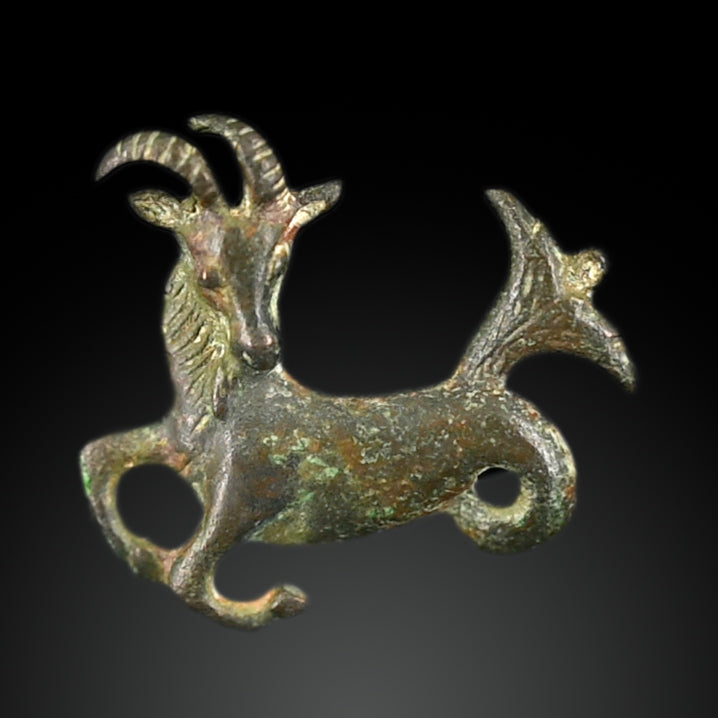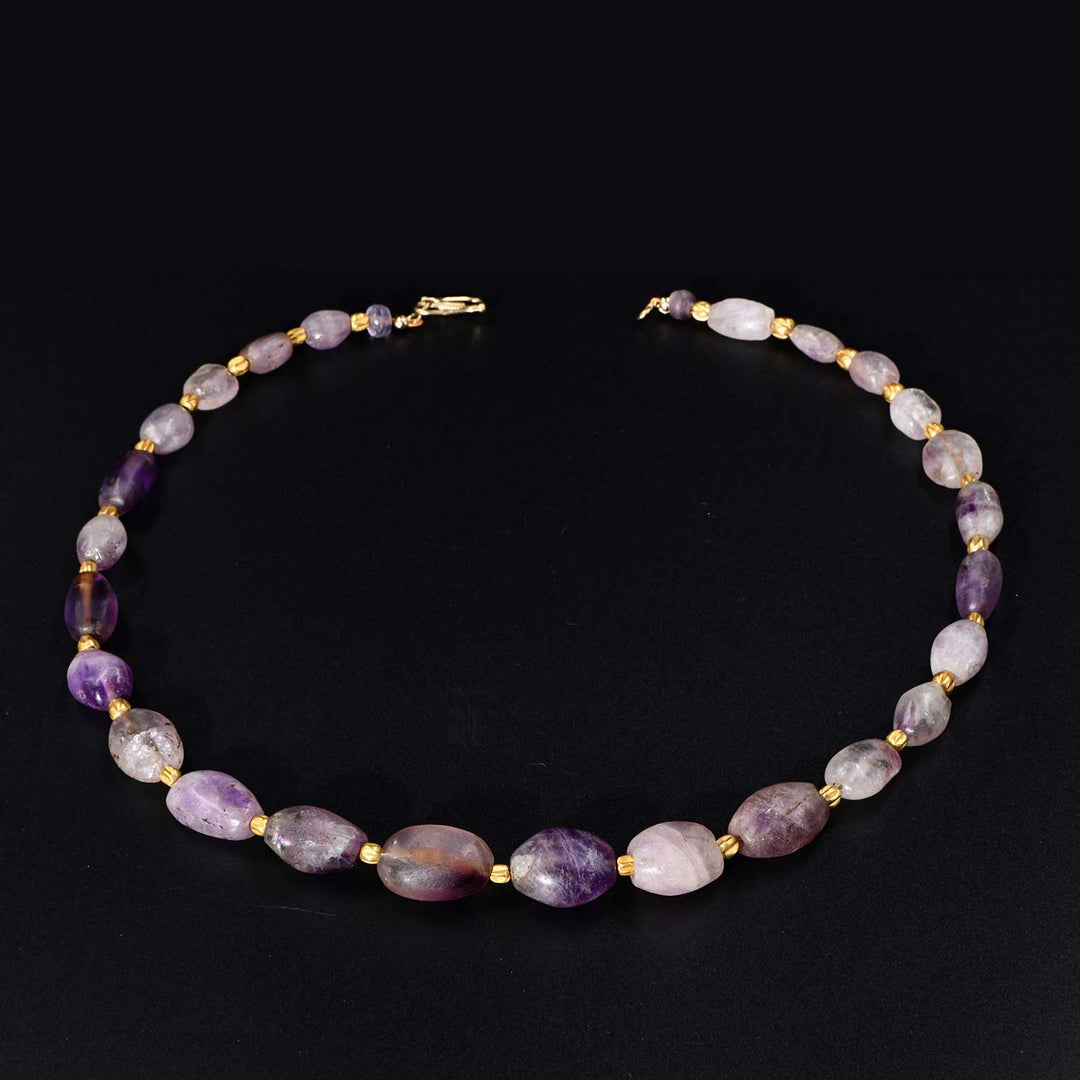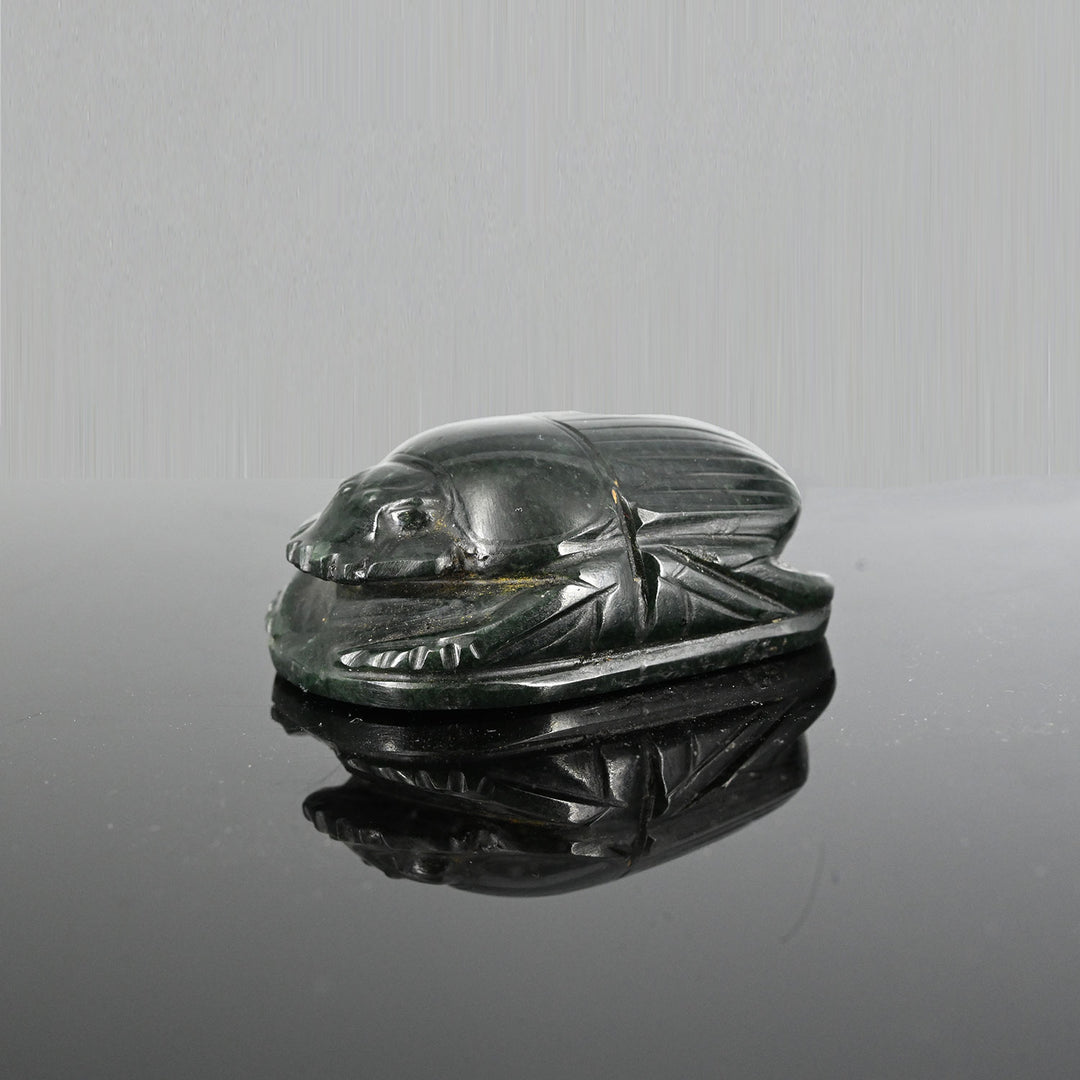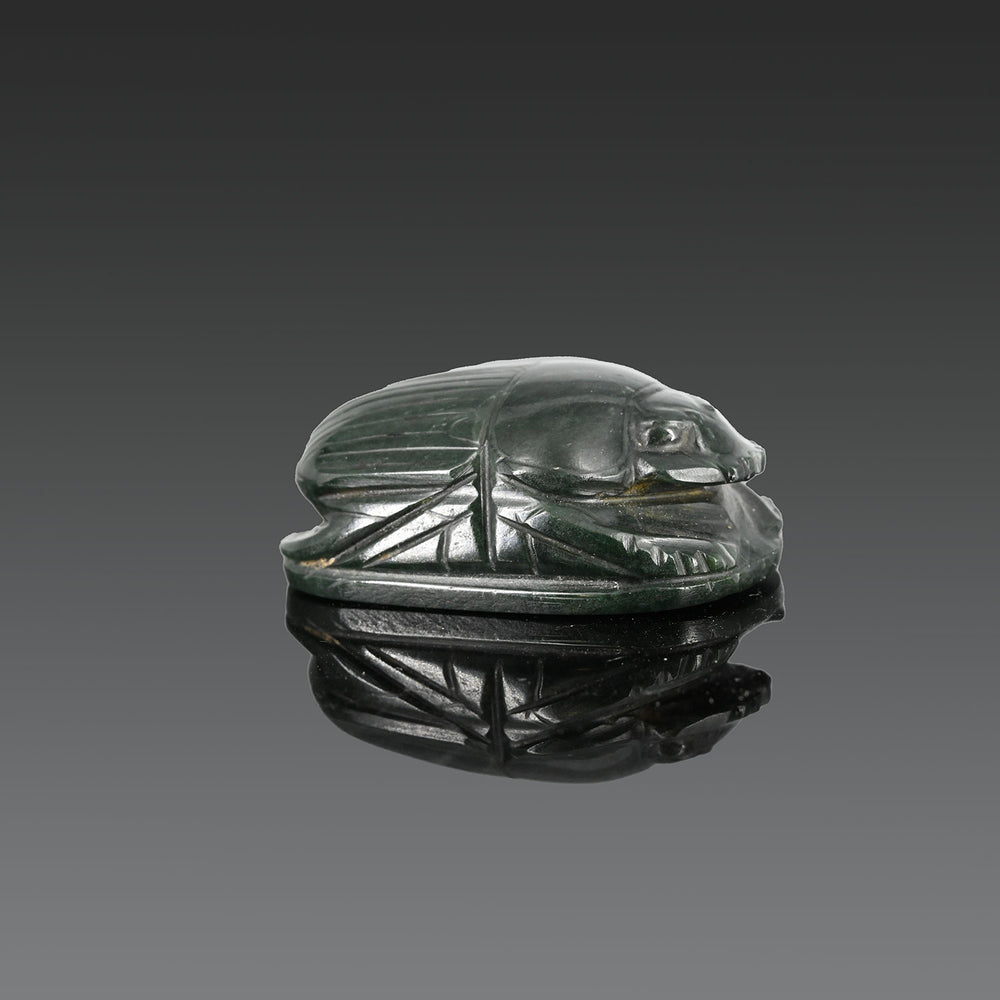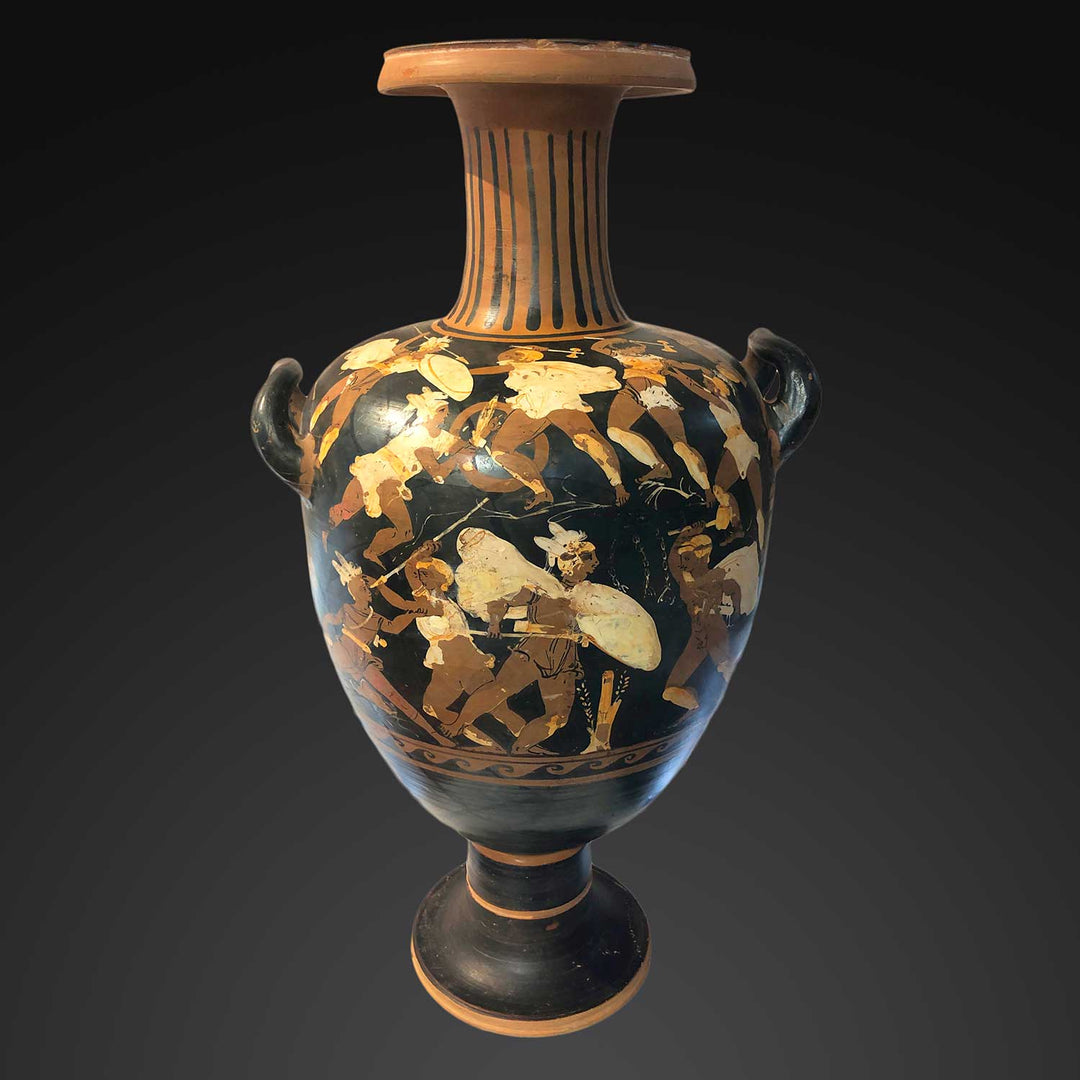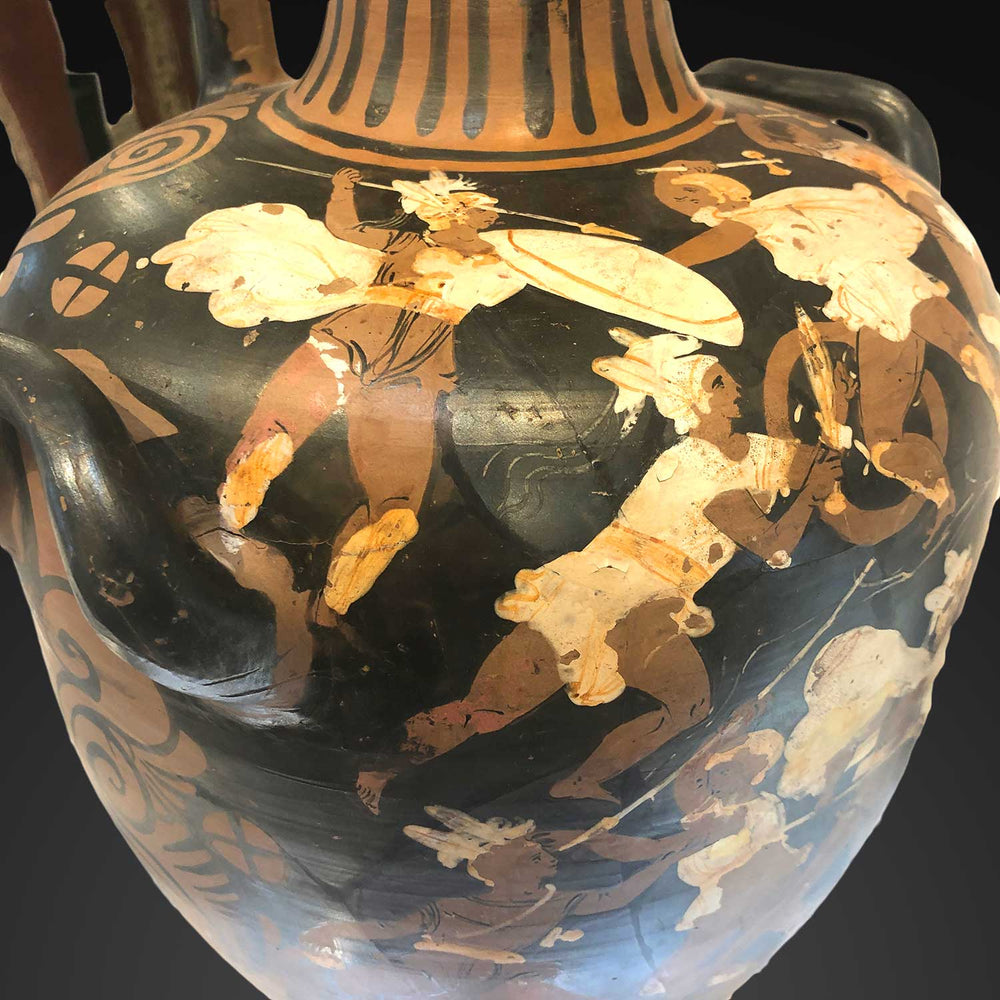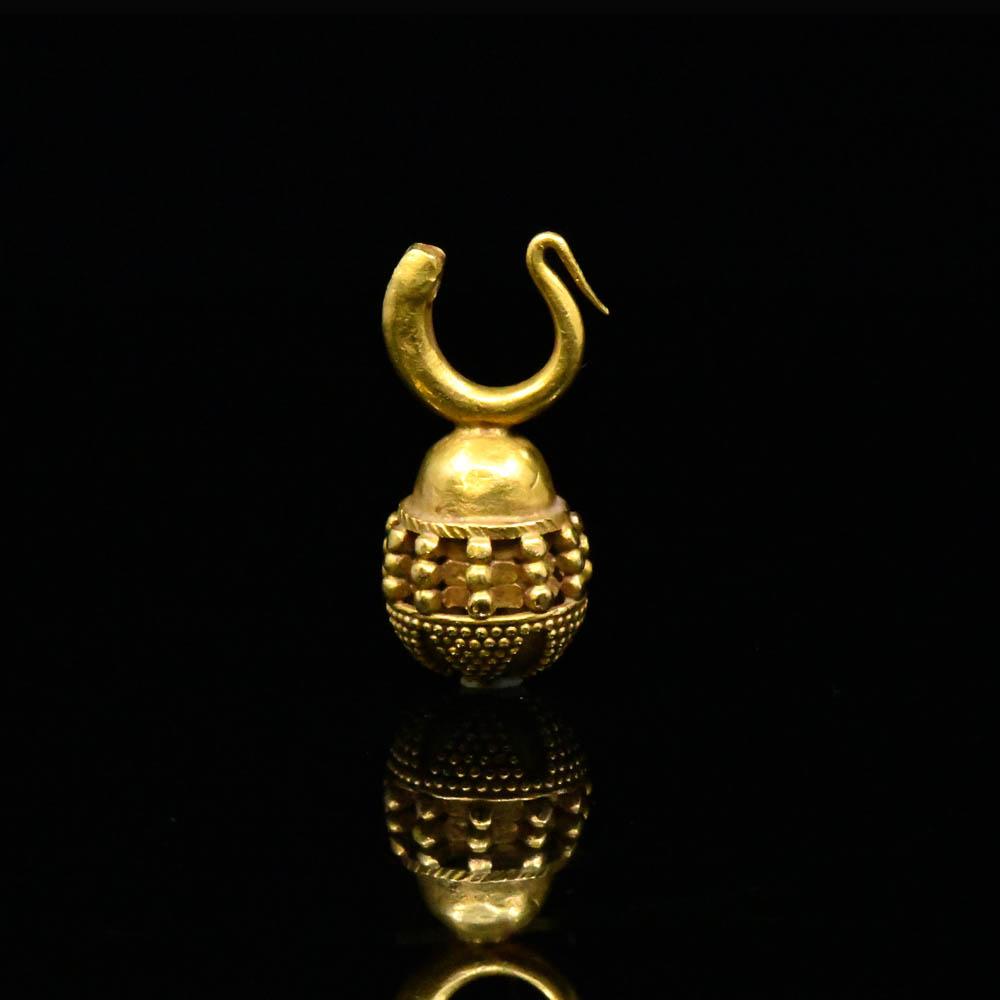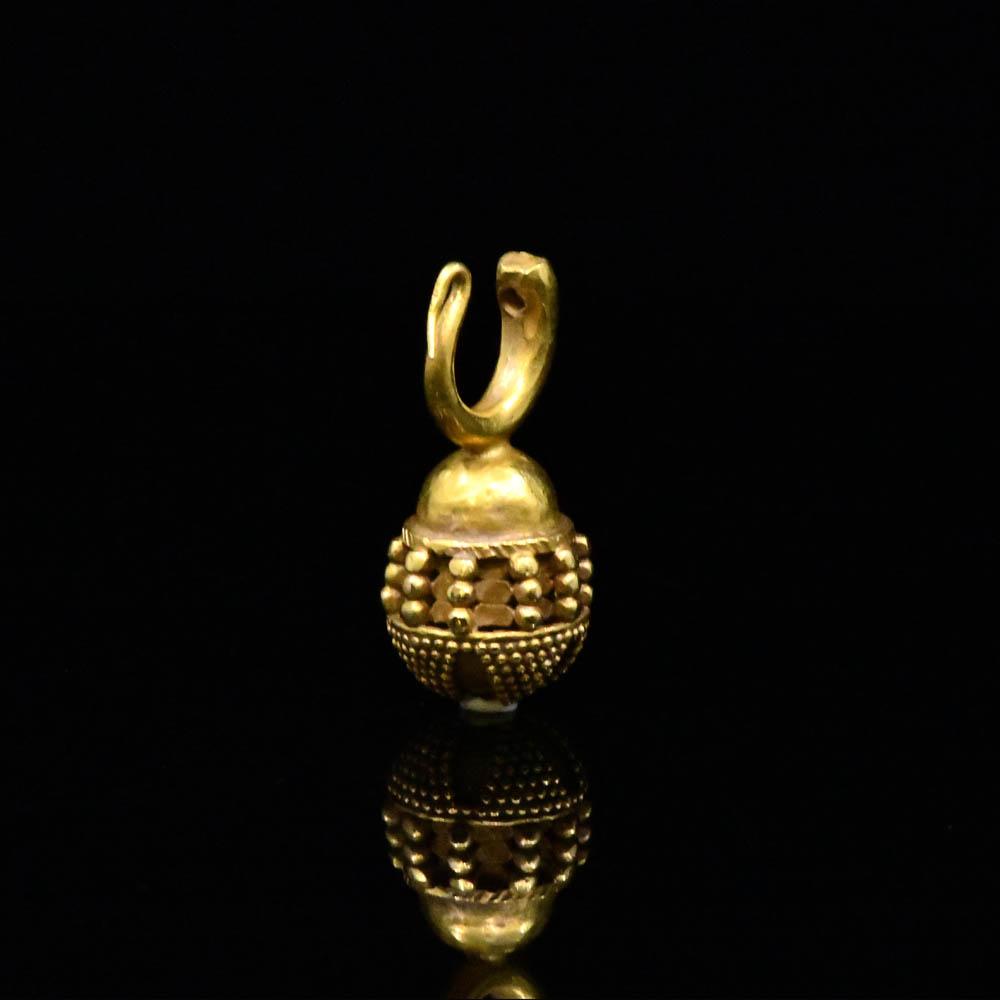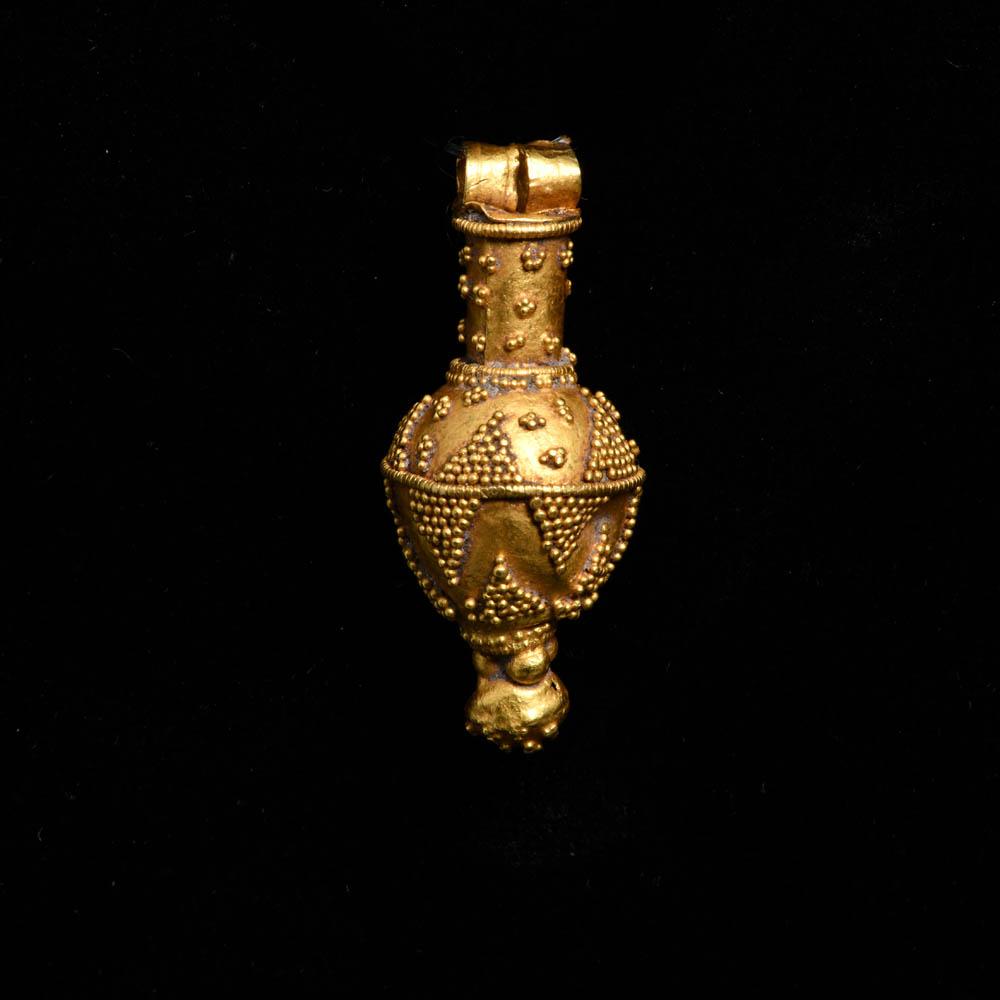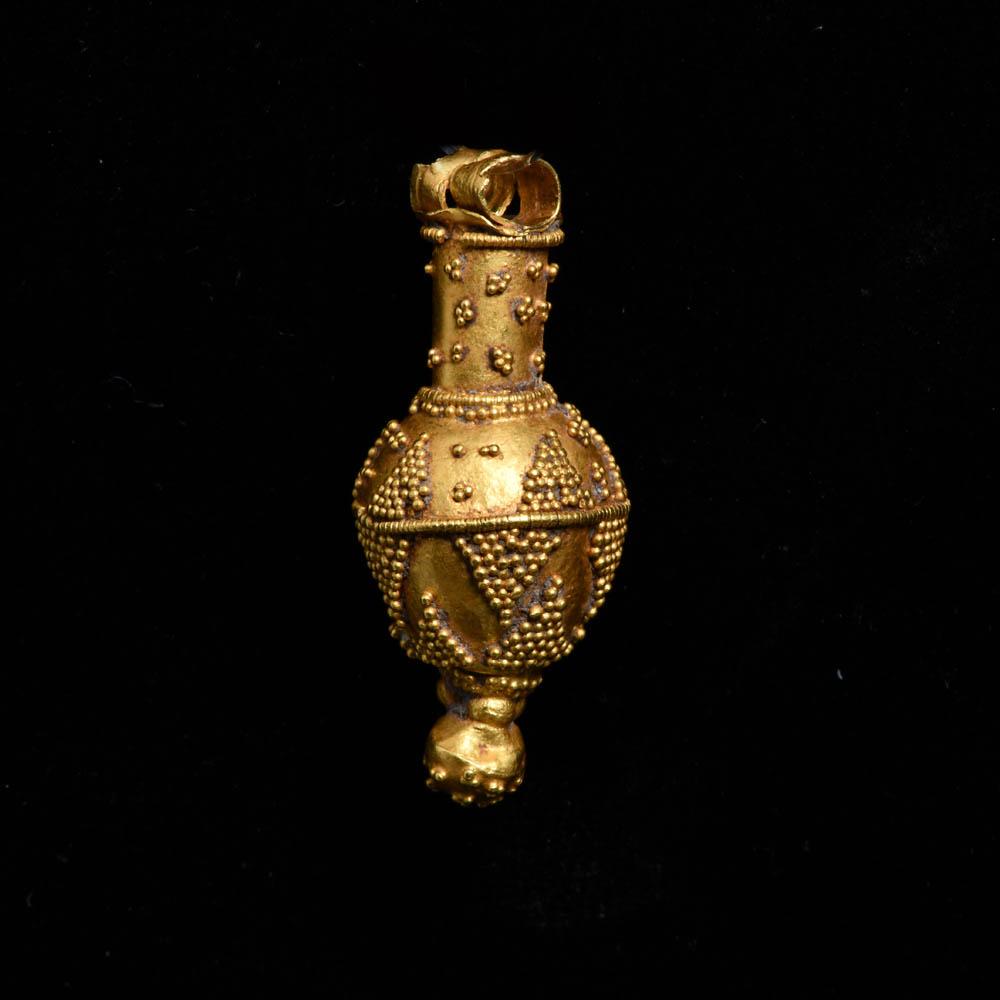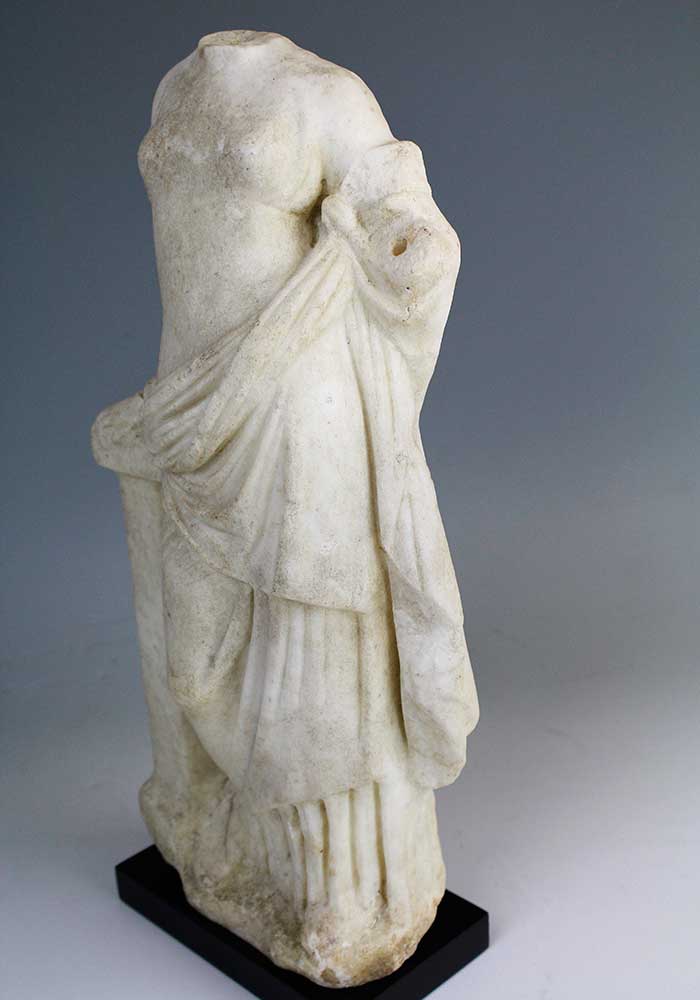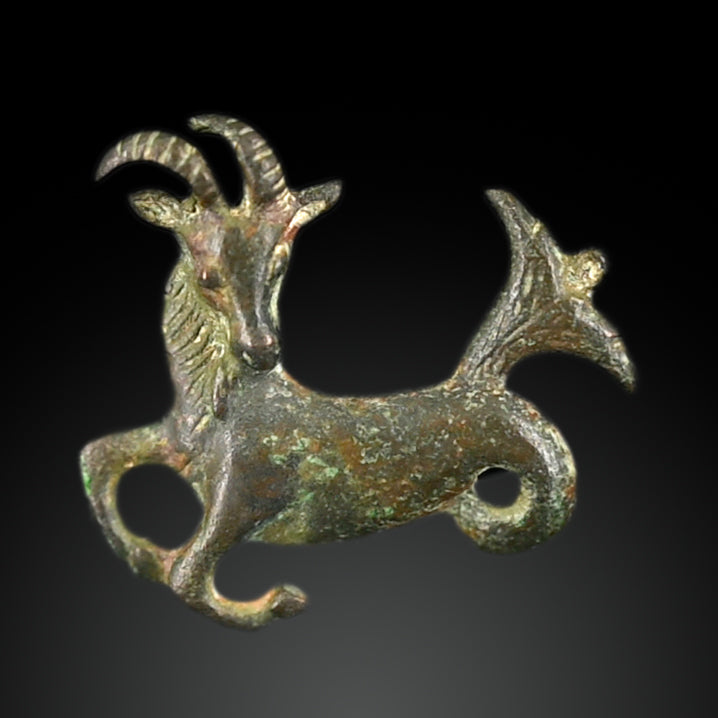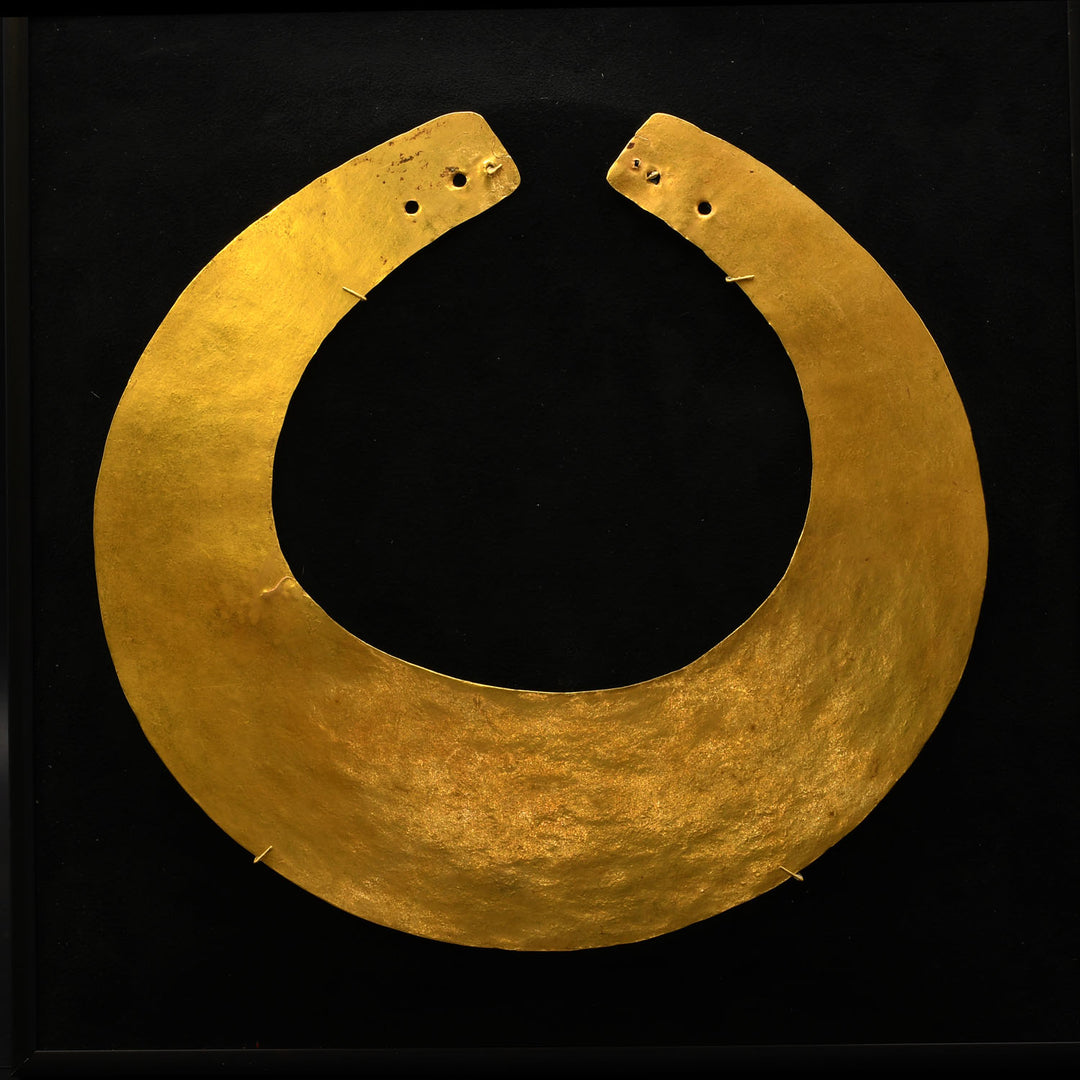Marble statues of children first appeared during the 3rd century BCE and quickly became one of the favored subjects in art. This delightful example depicts Bacchus, the youthful god of wine, as a young child. Carved in the round, Bacchus is shown seated in a pose commonly associated with children. His right hand rests on his leg while his left arm hangs relaxed beside his knee. His long, luxurious curls, which signify his divine identity, cascade down his neck. His head is turned, adding a naturalistic twist to the well-defined shoulders that slope gently. The overall pose is sensitive and relaxed, conveying a wonderful sense of movement.
Background: The bad boy of Mt. Olympus, and perhaps the most colorful of the Olympian gods, the youthful, beautiful Dionysus (Greek), or Bacchus (Roman), was the god of wine, viticulture, merriment, and theatre. Homer describes the god as the ‘joy of men,’ and Hesiod likewise describes him as ‘much-cheering.’ This is no doubt because Dionysos is credited with giving man the gift of wine. The Romans believed that Bacchus represented the spontaneous and unrestrained aspects of life, inspiring his worshipers in their drunken state, and freeing them to think and act in new ways. The chief festival held in Bacchus’ honor was the infamous Bacchanalia. Though specific details surrounding the Bacchanalia are scarce, the festivals were known to feature drinking, carousing, and reveling, among other activities. Bacchanalia festivals were often held in the countryside, far from unnatural and stiff city life. Versions of the festival were held several times a year in southern Italy and, following their conquest, in the Near East and Greek regions of the Roman Empire.
Reference: Z. Newby; Greek Myths in Roman Art and Culture, Imagery, Values and Identity in Italy, 50 BC-AD 250, Cambridge University Press, 2016. P.87.
Published: "Venerable Traditions: Works of Art from the Ancient World" (Fortuna Fine Arts , 2007). The Hellenistic period is notable for its tendency towards depicting youths in visual culture. During this time, marble statues of children emerged as a popular genre. Alexandria and Asia Minor were central production hubs for these works. Many of these statues represented young deities such as Herakles, Hermes, or Dionysos, often characterized by specific attributes they held. For instance, if a young figure holds grapes in their left hand, it usually depicts Dionysos as a child.
CF. a child with grapes in the Getty, inv. 73.AA.6, illustrated in Cornelius C. Vermeule, Greek and Roman Sculpture in America. Masterpieces in Public Collections in the United State and Canada (Berkeley, 1981), cat. No. 151, p. 184.
Medium: Marble
Dimensions: Height: 16 inches (40.5 cm), Width: 9 inches (22.86 cm)
Condition: The head has been reattached. There are losses noted on the nose, left hand, right knee, toes, and base. Expected surface wear includes nicks and deposits, as shown in the images. There are traces of pigment and/or mineral deposits on the coiffure. Otherwise, the item is in very good condition and is quite rare. An old inventory label numbered 8613 can be found on the base.
Provenance: Ex. private East Coast, USA collection, ex. Gorny & Mosch, Munich, Germany, 12/12/2006, lot 154, ex. Gorny & Mosch, 7/11/2006, lot 150. Published: “Venerable Traditions: Works of Art from the Ancient World” (Fortuna Fine Arts, 2007).


